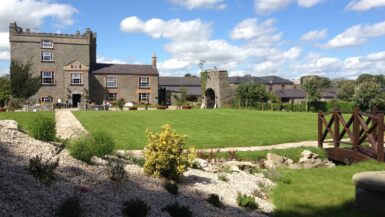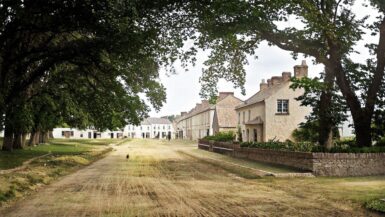Desmond Castle, located in the picturesque town of Kinsale, County Cork, Ireland, is a remarkable historical site that has witnessed centuries of Irish history. This comprehensive guide delves into the rich past of Desmond Castle, offering a unique and informational overview of its storied history. Learn about the castle’s origins, its uses throughout the centuries, and the significance it holds today.
Desmond Castle’s history dates back to the early 15th century, when it was built by the Earl of Desmond, a member of the powerful Fitzgerald family. Constructed as an urban tower house, the castle was originally intended as a symbol of wealth and prestige, showcasing the family’s influence in the region. The building’s sturdy, four-story structure, with its arched entrance and stone walls, has stood the test of time, and today, it continues to captivate visitors with its timeless beauty.
The strategic location of Desmond Castle, near the mouth of the River Bandon, allowed it to play a crucial role in the defense of Kinsale, which was a significant port town during the Middle Ages. The castle’s prominent position enabled the Earl of Desmond and his successors to exercise control over the surrounding areas, including the lucrative maritime trade that was the lifeblood of Kinsale’s economy.
The Castle’s Role in the Wine Trade and the Spanish Connection
During the 16th century, Kinsale emerged as an important center for the wine trade between Ireland and mainland Europe, particularly Spain and Portugal. Desmond Castle played a significant role in this burgeoning trade, as it was used as a customs house to store and tax imported wine before it was distributed throughout Ireland. The castle’s spacious cellar and secure structure made it an ideal location for this purpose.
The wine trade fostered strong connections between Kinsale and Spain, and these ties were further cemented when the castle was leased to the Spanish merchant Don Juan Lombardo in 1595. Lombardo used Desmond Castle as his residence and the headquarters for his wine importing business, solidifying the building’s association with the wine trade and Spain.
A Prison for Pirates, Rebels, and More: Desmond Castle as a House of Pain
In 1600, Desmond Castle took on a new role when it was converted into a prison to house captured pirates, rebels, and other criminals. Over the centuries, the castle’s prisoners included numerous high-profile figures, such as the infamous pirate John Hackett, who was responsible for the sinking of the Spanish treasure ship, the Girona, in 1588.
During the 17th and 18th centuries, the castle earned the nickname “The French Prison” due to the large number of French prisoners held there, particularly during the Williamite War in Ireland (1689-1691) and the Napoleonic Wars (1803-1815). Conditions within the prison were notoriously harsh, with overcrowding, disease, and malnutrition plaguing the inmates. Many prisoners did not survive their incarceration, and their remains were interred in a nearby mass grave known as “The French Burial Ground.”
Desmond Castle’s role as a prison extended into the 19th century, when it was used to house Irish rebels, including participants in the 1798 Rebellion and the Young Irelander Rebellion of 1848. The castle’s grim reputation as a place of suffering and death led to its being referred to as the “House of Pain,” a moniker that still resonates with visitors today.
Restoration and Rebirth: The Journey to Becoming a Museum
After centuries of use as a prison, Desmond Castle fell into disrepair and was eventually abandoned in the late 19th century. However, the building’s historical significance was not forgotten, and in the 20th century, efforts were made to preserve and restore this important piece of Irish heritage.
In 1938, the Irish Office of Public Works (OPW) took over the management and care of Desmond Castle, initiating a long process of restoration that continued for several decades. Under the OPW’s guidance, the castle was carefully restored to its former glory, with attention paid to preserving its unique architectural features and historical character.
The culmination of these efforts came in 1997, when Desmond Castle was officially reopened as a museum, allowing the public to explore and appreciate the building’s fascinating history.
The Desmond Castle Museum: A Treasure Trove of Irish History
Today, the Desmond Castle Museum offers visitors a unique opportunity to step back in time and experience the captivating history of this remarkable building. The museum features a range of exhibits and displays that detail the castle’s various roles throughout the centuries, from its beginnings as a symbol of wealth and power to its time as a customs house and prison.
A visit to the Desmond Castle Museum is a journey through Ireland’s past, highlighting the significant events and figures that have shaped the country’s history. Key exhibits include a detailed exploration of the wine trade between Kinsale and Spain, an examination of the castle’s use as a prison, and a tribute to the many individuals who suffered and died within its walls.
In addition to its historical exhibits, the Desmond Castle Museum also hosts a variety of events and activities throughout the year, including guided tours, educational programs, and special events that celebrate the region’s rich cultural heritage.





Leave a reply